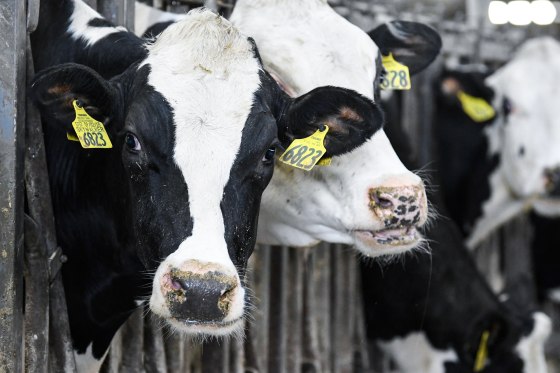
The Animal and Plant Health Inspection Service of the U.S. Department of Agriculture announced on Wednesday that it had found a strain of bird flu in dairy cattle that had not been before observed in cows.
Prior to this discovery, the USDA announced that the same strain of the virus was responsible for all 957 avian flu cases in dairy cow herds that had been documented since the outbreak started last year.
The Centers for Disease Control and Prevention report that over 70 persons in the United States have contracted bird flu, with the majority of those affected being farm workers. The virus has spread among dairy herds and poultry flocks.
In addition to killing tens of millions of egg-laying chickens, bird flu has caused egg costs to soar to all-time highs.
In a press release, the USDA stated that it has discovered a new strain in dairy cows for the first time using genome sequencing of milk from Nevada.
Prior to the agency’s release, Reuters reported on Wednesday that the second strain had been detected.
According to the organization, this past fall and winter, the second strain was the most common genotype among wild birds. The agency’s National Milk Testing Strategy, which started testing milk nationwide for avian flu in December, helped identify it.
In a statement released on January 31, the Nevada Department of Agriculture said that two counties’ herds were quarantined because of avian flu detections. It merely mentioned that the strain had been found in wild birds; it did not specify which strain had infected the cattle.
A request for comment was not immediately answered by the state agency.
According to USDA data, four dairy herds in Nevada were found to have avian flu on January 31.
In order to prevent the strain from spreading to dairy cattle in other states, the USDA must act swiftly to contain the outbreak, according to veterinary and public health consultant Dr. Gail Hansen.
After the virus initially jumped to cows from wild birds, sick cattle were moved from Texas last year, causing the illness to spread across the nation.
According to Hansen, “they let cattle move while they were still infectious, and we didn’t get a hold on it before.” We do not want Nevada to experience that same situation.
Before milking dairy animals cross state lines, the USDA mandates that they be tested for avian flu.
According to Hansen, “I have a suspicion that cattle that were infected with the previous strain will not necessarily be protected against this strain.”
